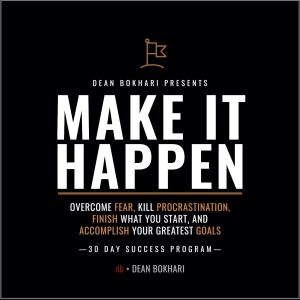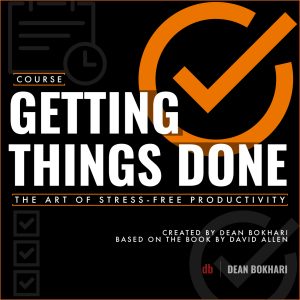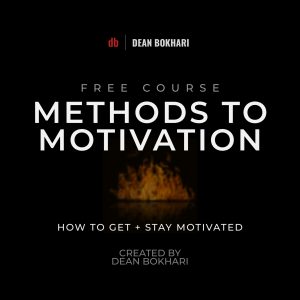When Dean and I had our first couples therapy session, the therapist asked us what our goal was. I’ll never forget Dean’s response:
“I don’t want an ordinary relationship. I want an extraordinary one.”
Dean has always pushed me—not just to be the best version of myself, but to co-create the most evolved version of our relationship.
So, for Valentine’s Day, I looked back at a year’s worth of therapy notes, combined them with research and personal reflections, and uncovered three of our most transformative insights—lessons that have profoundly shifted the way we love.
This guide isn’t a blueprint for a perfect relationship but a roadmap through the messy, beautiful work of love.
We haven’t stopped fighting, but we have learned how to turn conflict into connection.
I hope it helps you feel seen, understood, and a little less alone in your own relationship journey.
With love & lots of unfiltered vulnerability,
Amna
TOOL 1: The Trigger Tracker
Dean and I used to have the same fight over and over. I’d push for a response, and he’d shut down. The harder I pushed, the more he withdrew. The more he withdrew, the more abandoned I felt.
Then we realized that our arguments weren’t really about the actual issue in front of us—they were about the deeper fears and unresolved wounds beneath them.
Dean’s core wound? Feeling like he had to do everything alone. That no one would ever truly have his back.
My core wound? Feeling like I was invisible. That my needs weren’t important.
The majority of our arguments—whether we knew it or not—were rooted in these fears.
Once we uncovered this, everything shifted. We stopped reacting to the surface argument and started addressing what was really going on underneath.
So now, we have a process, which we have named “The Trigger Tracker”. To apply it, it’s important to first understand what triggers are. Triggers are events that spark intense emotional responses.
You can recognize triggers by paying attention to physical sensations like an increased heart rate, tension, or an upset stomach. Additionally, noticing sudden mood changes or racing thoughts can be a sign that you’re reacting to something deeper than the present moment.
Applying the Trigger Tracker
1. Pause & Feel
- Take a deep breath and ask: “What am I really feeling?”
- Notice physical sensations (tight chest, racing heart, clenched jaw).
- Name the emotion without judgment (“I’m feeling anxious”).
2. Map your Emotional Landscape
- Ask: “What’s beneath this surface feeling?”
- Identify what’s really driving your reaction (Is anger masking hurt, fear, or rejection?).
- Notice your urge or impulse (Example: Wanting to send an angry text).
3. Name the Core Fear
- Access deeper fears using these prompts:
- “This reminds me of…”
- “I’m telling myself…”
- “What I really need is…”
- Fill in the blank: “I’m not just mad, I’m afraid that ______.”
Example Shift:
❌ “You never listen to me!”
✔️ “I feel unheard, and that scares me. I feel myself shutting down, so I need a moment to regulate before we continue.”
By creating space between trigger and reaction, you shift from blame to accountability—owning your feelings and expressing them in a way that invites connection instead of conflict.
TOOL 2: The Pattern Rewirer
One day in therapy, I broke down crying.
For weeks, I had been frustrated with Dean, feeling like I had to mold myself into something he wanted. I noticed I was doing little things – changing my opinions during conversations, hesitating to share my real thoughts. My stomach would knot up before expressing any preference that might clash with his.
But in that moment, a deeper truth surfaced:
I wasn’t mad at Dean. I was mad at myself—for abandoning parts of me just to avoid disappointing him. Every time I felt that familiar tightness in my chest, I’d automatically shift into what I thought he wanted.
This wasn’t new. I had spent my childhood shaping myself around my mother’s needs, doing whatever I could to keep her happy. Her yelling could erupt over anything, and I learned early on that the safest thing to do was to shrink—to soften my voice, suppress my reactions, and stay out of her way. I became an expert at adjusting myself to keep the peace, doing whatever it took to avoid setting her off. And now, without realizing it, I was doing the same thing in my marriage.
The pattern felt safe, familiar. If I could just be perfect enough, agreeable enough, maybe I’d never have to face rejection. But the cost was crushing – pieces of myself disappearing, one compromise at a time.
That day, through tears, I told Dean, “I hate the part of me that keeps trying to change for you. Every time you express a preference different from mine, I panic. I automatically assume I need to change, just like I did with my mom.”
Dean sat there, quiet for a moment. Then he reached over, held my hand, and said:
“Thanks so much for sharing that with me. I never want to change you. I love every part of you.”
His words landed deep. For the first time, I realized the pressure to change wasn’t coming from him—it was coming from me. The belief that I needed to be someone else to be loved was a story I had been spiraling in for a long time.
But the truth was, he held space for all of me—my flaws and my fullness, my struggles and my strengths.
Now, I’m learning to catch myself when the old pattern starts. When I feel that familiar urge to shape-shift, I pause and ask myself: “Is this healthy adaptation or am I abandoning myself again?”
I practice sitting with the discomfort of having different opinions from Dean. Sometimes I even say out loud: “It’s okay to be different. It’s okay to disappoint sometimes.”
And because Dean now understood this wound in me, he’s become more mindful of how he communicates his needs. When he sees me starting to slip into the old pattern – that hesitation in my voice, the quick agreement without reflection – he gently asks, “What do you really think? I want to know your true feelings.”
Gosh! I love him even more deeply for advocating for me, loving all of me—without needing me to be agreeable—and making sure I never feel like I have to shrink myself to meet his expectations.
I wish love alone was enough to break deep-seated patterns. But awareness and action are what create real change.
That’s why we start with Tool #1: The Trigger Tracker—to recognize the moments that set us off. Once we see our triggers clearly, the next step is to transform the patterns they create.
While triggers are events that cause strong emotional reactions, patterns are the automated ways we respond—whether through withdrawal, defensiveness, or over-explaining. So, after identifying your triggers, the next step is to make small, intentional shifts to break old cycles—and that’s where the Pattern Rewirer comes in.
Applying the Pattern Rewirer
1. Identify Your Patterns
- Write down the last three arguments you had with your partner.
- Identify your automatic reactions in relationships:
- What’s your default response when stressed?
- How do you seek safety?
- What stories do you tell yourself?
2. Connect Past to Present
- Where did this pattern originate – what’s your earliest memory of feeling this way?
- Which relationships reinforced this response?
- How did this pattern serve or protect you in the past?
- How is this pattern serving you now?
3. Choose a New, Authentic Response
- Pause before reacting: “This isn’t about now—this is an old wound.”
- Clarify before assuming: “What did you mean by that?” or “Will you still love me if I disappoint you?”
- Ask: “How would my most grounded, loving self respond?”
- Choose a new response by taking one small action that aligns with who you want to be.
Example Shift:
Old Pattern: Over-explaining to prove worth.
Origin: Childhood need to justify everything.
New Response: “I can state my preference once and trust it’s enough.”
❌ “Dean is making me feel bad about my choices again.”
✔️ “Dean is not my mother. It’s okay if I disappoint him. His love isn’t conditional—I see that now.”
Recognizing patterns helps disrupt reactive cycles. Repetitive patterns and reactions are like riding a carousel—the music plays, the lights spin, and it feels like movement, but in reality, you’re circling the same fixed point, replaying old stories with new faces.
Choosing a new response—creating new neural pathways—is like stepping off the carousel. At first, it feels disorienting, uncertain, even uncomfortable. But that discomfort is the very sign that you’re no longer following a script from the past—you’re rewriting it in real time.
This is how we reclaim our power. By stepping off the predictable loops of the past, we open ourselves to new possibilities—ones rooted in authenticity—stretching beyond the edges of our familiar, pre-programmed carousels and into a future we never thought possible.
TOOL 3: The Sacred Moment Maker
For as long as I can remember, PMS has been a constant source of conflict. I become moody, wild, unpredictable, and volatile, and it’s often met with eye rolls or avoidance from Dean.
One small but powerful shift happened when our therapist suggested we create a visual reminder—a way to signal that I was entering a different internal season.
I knew exactly what this symbol needed to be: our Holy Book. Now, once a month, I place it on our dining table as a gentle reminder for all of us to honor this phase with compassion and respect.
This simple shift changed everything:
- Instead of resisting my emotions, we embrace them.
- Instead of hiding it, we name it openly.
- Instead of tension, we find moments to laugh about it together.
And in doing so, it transformed our relationship:
For me: Instead of feeling like I was too much, I feel seen and understood.
For Dean: Instead of feeling helpless, he found his true role—not to fix, but to stand beside me with grace.
Now, my cycle is honored as a sacred and natural experience—no longer something to endure or dismiss, but something to be met with presence and respect. Just as we adapt to the changing seasons, grabbing a jacket when it’s cold, my family knows to prepare for my inner weather with the same understanding and care.
When we recognize these moments, we transform them into opportunities for connection.
That’s where The Sacred Moment Maker comes in—not just for honoring menstrual cycles, but for any recurring tension point in a relationship. Whether it’s conflict over chores, emotional overwhelm, or tough conversations, a simple grounding ritual can shift the energy and create space for more understanding.
Applying the Sacred Moment Maker
1. Identify a Recurring Tension Point
- Pinpoint a moment that often leads to conflict:
- Parenting differences (e.g., discipline, screen time, bedtime routines).
- Financial stress (e.g., budgeting, spending habits, financial planning).
- Emotional disconnect (e.g., one partner feeling unheard or unappreciated).
- Tough conversations (e.g., boundaries with extended family, career decisions).
2. Create a Grounding Ritual
- Turn tension into connection with a simple practice:
- Resistance to chores? Set a timer and clean together with music.
- Stressful morning? Share a quick hug or affirmation.
- Parenting conflicts? Discuss discipline approaches after a walk.
- Financial disagreements? Start money talks with coffee, dessert, or intimacy.
- Emotionally disconnected? Schedule a weekly check-in.
- Difficult dialogue? Hold hands or sit side by side.
3. Practice & Adjust
- Introduce the ritual consistently and notice the impact.
- If it doesn’t feel natural, tweak it until it fosters connection.
Example Shift:
❌ Yelling during conflict.
✔️ Before diving into a tough conversation, light a candle as a signal to pause, breathe deeply, and ground yourselves in calm connection.
Think about a conflict that keeps coming up between you and your partner…
Now, what’s one simple thing you and your partner can do before or during this tension point to create more compassion?
Boom! You have your ritual.

This Work is Hard, But Love is Worth It
Marriage isn’t about never fighting—it’s about learning to reframe our conflicts as invitations to deeper connection.
Dean and I are still learning how to transform our mess into our message—turning challenges into opportunities for growth, understanding, and healing together.
If this guide resonated with you or if any questions come up, please send us an email at hi@deanbokhari.com. We would love to support you.
And if you would like to take an even deeper dive…
Check out the Connect Course where we dive deeper into the mindset shifts, practices, and personal stories that help transform conflict into connection.


